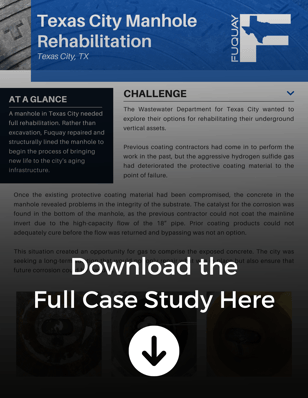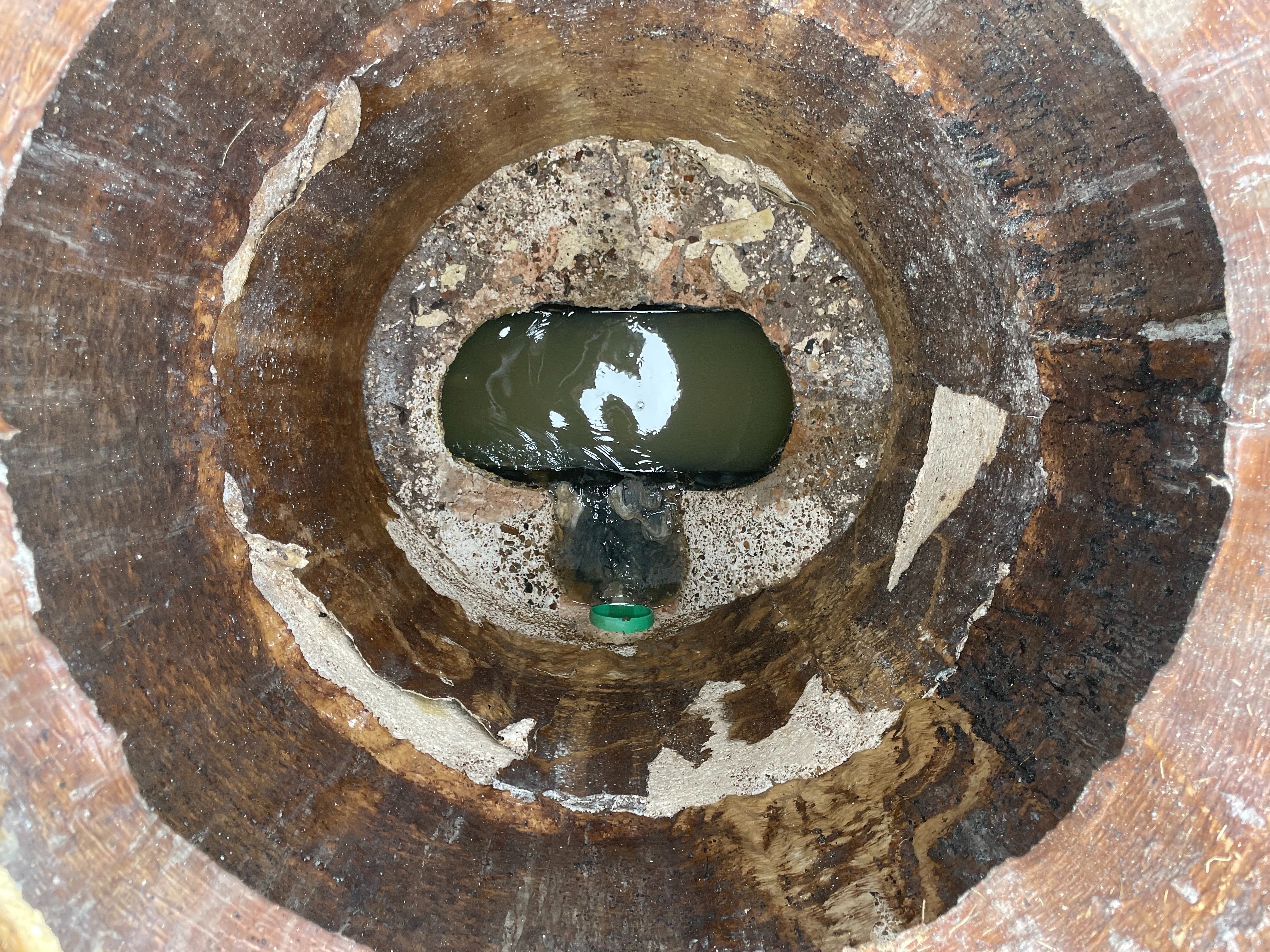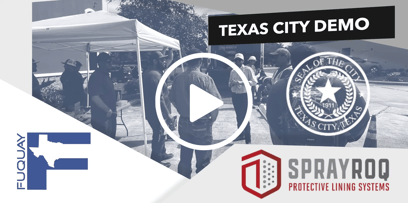Texas City Manhole Rehabilitation
THE CHALLENGE
The Wastewater Department for Texas City wanted to explore their options for rehabilitating their underground vertical assets.
Previous coating contractors had come in to perform the work in the past, but the aggressive hydrogen sulfide gas had deteriorated the protective coating material to the point of failure.
Once the existing protective coating material had been compromised, the concrete in the manhole revealed problems in the integrity of the substrate. The catalyst for the corrosion was found in the bottom of the manhole, as the previous contractor could not coat the mainline invert due to the high-capacity flow of the 18” pipe. Prior coating products could not adequately cure before the flow was returned and bypassing was not an option.
This situation created an opportunity for gas to comprise the exposed concrete. The city was seeking a long-term solution that would not only repair what was in place but also ensure that future corrosion could be avoided.
.jpg?width=1200&length=1200&name=Texas%20City%20MH%20Prep%20and%20Coat%20(3).jpg)
.jpg?width=1200&length=1200&name=Texas%20City%20MH%20Prep%20(14).jpg)
.jpg?width=1200&length=1200&name=Texas%20City%20MH%20Pre%20Pics%20(2).jpg)
.jpg?width=1200&length=1200&name=Texas%20City%20MH%20Prep%20(7).jpg)

THE SOLUTION
Fuquay crews arrived on site and determined that the best solution would be to remove the failed coating, restore the concrete with Cementitious Repair Material (CRM), and apply a structurally engineered application of 250 mils of SprayWall.
A combination of cleaning and abrading the existing structure allowed for the swift extraction of the existing coating. One inch of CRM was troweled onto the aged concrete to build back the substrate to its original profile, while simultaneously filling the voids, joints, and cracks that had plagued the asset. The high-performing CRM was also used to smooth the hydraulic slide from the incoming service line to ensure a smooth transition of flow into the mainline and avoid any unnecessary turbulence.
The incoming wastewater lines were plugged to stop the flow, and the bench and invert sections were coated to the manufacturer’s recommendation of 250 mils. Flow-through plugs were then used in the invert to manage the incoming flow and the remainder of the structure was coated from the bench section to the manhole ring in multiple passes to achieve the high-build requirement.
By coating the vertical asset in its entirety, a sealed and monolithic structure is created internally by the polyurethane to prevent underlayment exposure to the corrosive gas. This process, in conjunction with the 50+ year design life of SprayWall, brought new life to the aging structure and promotes the long-term focus of the City’s investment in infrastructure.
 To learn more, contact us below. You'll get access to the full case study immediately, and one of our team will reach out to see how we can help solve your challenge.
To learn more, contact us below. You'll get access to the full case study immediately, and one of our team will reach out to see how we can help solve your challenge.


